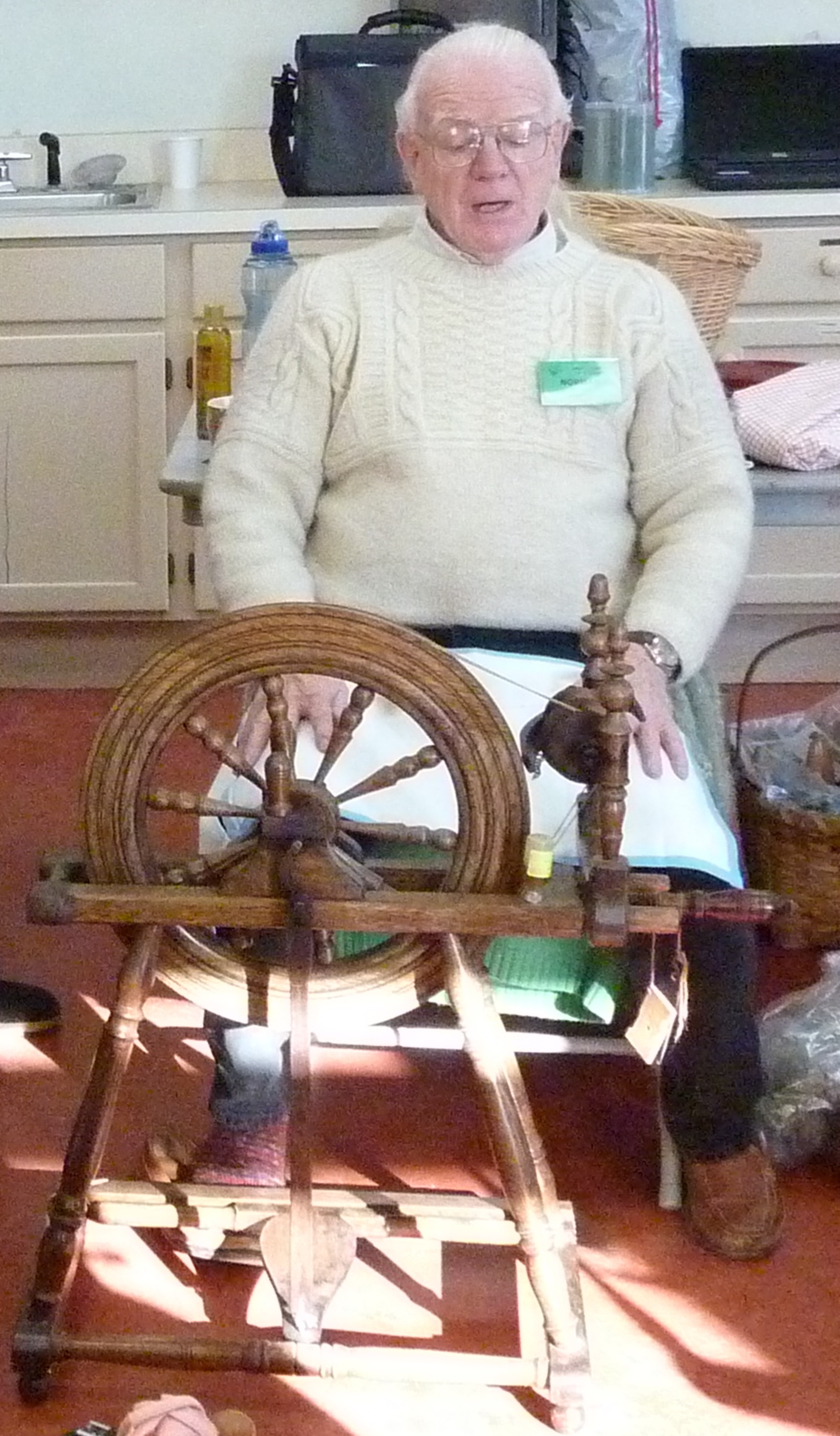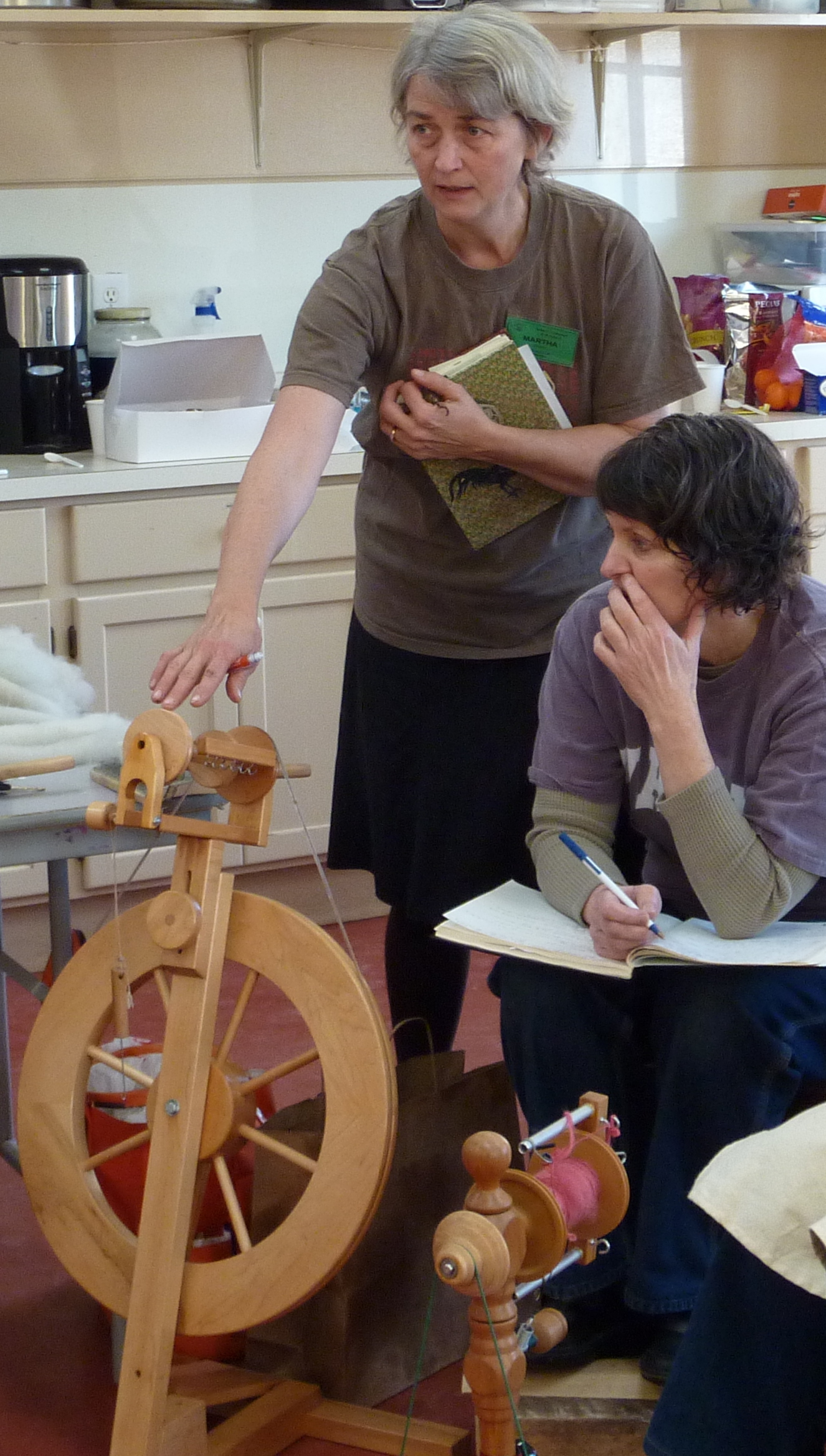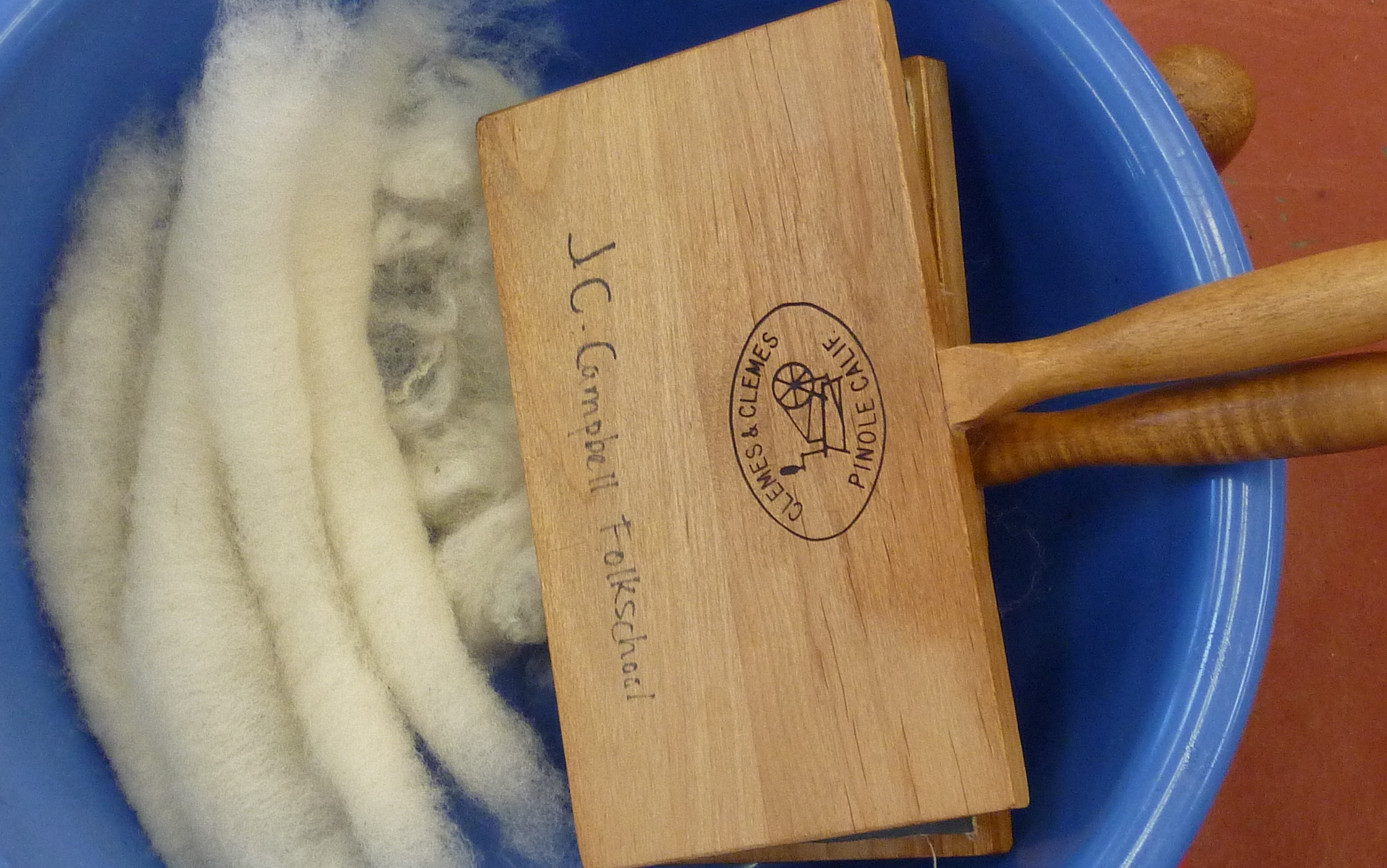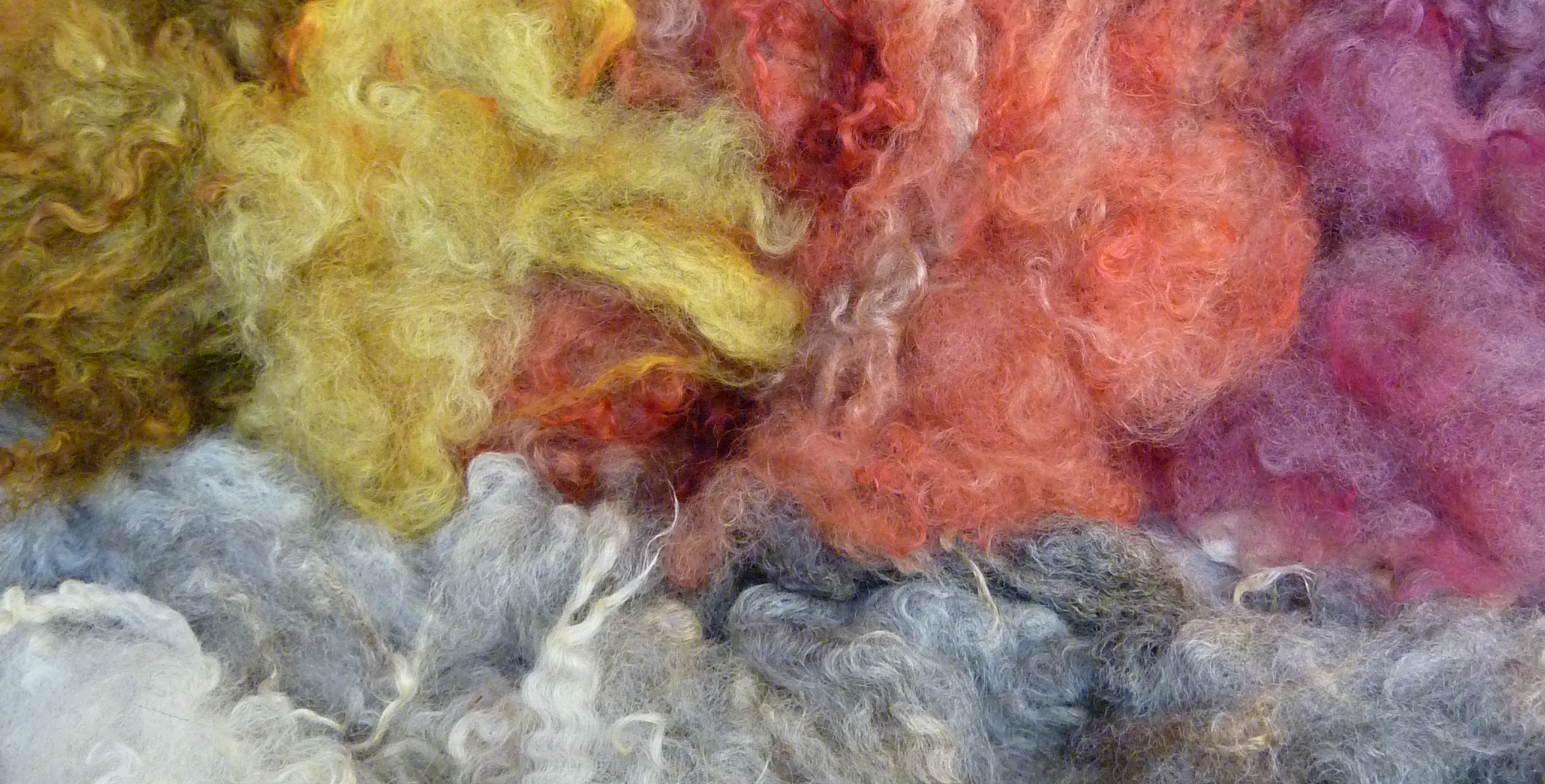25 Jan Spinning With a Historical Twist
Martha Owen and Norman Kennedy joined together this past week to teach an advanced spinning class at the John C. Campbell Folk School. Norman learned to spin, knit, and weave from his grandparent’s generation, from people who were working with textiles in the late 1800s, when Victoria was still the Queen.
Martha is the resident fiber artists at the Folk School. When not teaching she is tending to her forty sheep and two collie dogs.
Both expert spinners are also great story-tellers, so there wasn’t a dull moment to be had.
“We started using the distaff and spindle, and progressed to the walking wheel and on to the treadle wheel,” Norman said, “because that’s how it historically was. We used a variety of fibers including wool, cotton, and flax and helped the students improve their techniques so that they got more out of the time and effort that they put in to it.”
First the students learned to card the fiber into rolags. The hand held cards act as a brush to align the fibers to look like smoke. The more delicate the rolag, the more control the student has to spin thin thread-like yarn. Hand cards were invented in the 1500s. Before this, the fibers were combed. “They found combs in the viking ship burials,” said Norman.
The class also dyed wool using onion skins for yellow, cochineal for the colors scarlet and crimson, and copper with ammonia for a mint green. Martha worked with the students on design techniques for knitting, and tricks to layer and mix colors when carding.
“At the end we waulked (luadh in the original Gaelic) a piece of tweed to show the students a form of how finishing a piece was done in the highlands and western islands in Scotland amongst Gaelic speaking people.” Waulking is a process of semi-felting the cloth to make it somewhat water and wind repellent. Norman and Martha will be teaching together again next January. Thank you Melissa Weaver Dunning for the photos!








Sorry, the comment form is closed at this time.